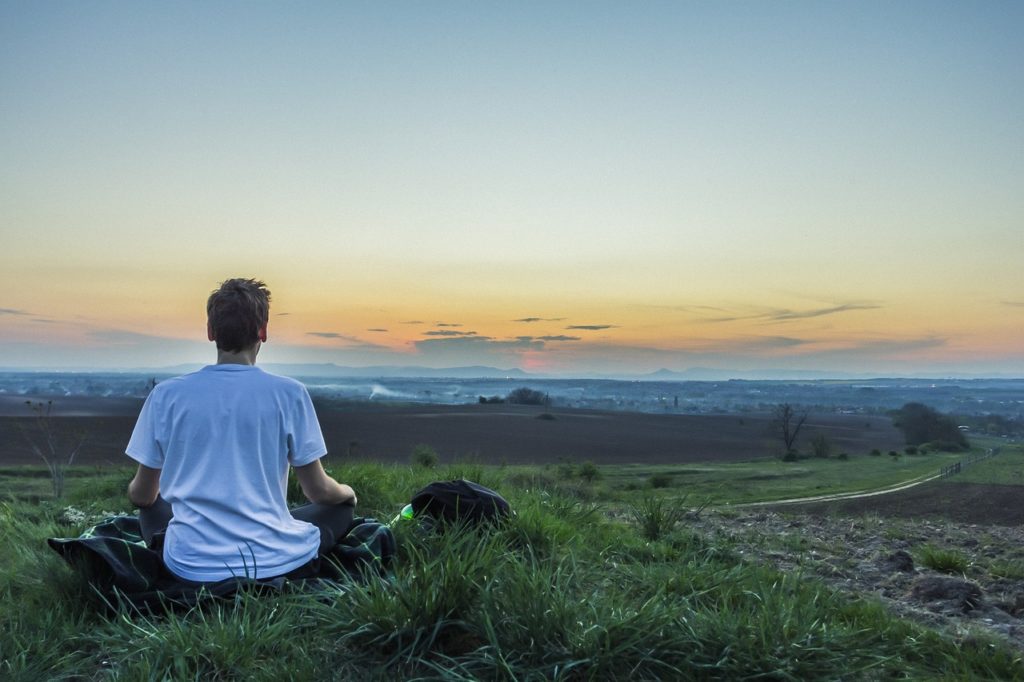
by Mary Watson,
My passion for Pranayam was fostered during a 3-year sojourn at the Sivananda Yoga Centre/Ashram in Henderson, Auckland, in the mid-1980s; over 34 years later, I still feel excited about it.
To this day, the old tradition of unifying body, mind, and breath into one practice continues to teach me.
Having the good fortune to learn from my teacher standing/sitting next to me for 3 years, sharing his then 47 years of practice, facilitated my understanding of the deeper connection between body, mind and breath, and the awareness of asana being a vehicle of yoga and pranayama. It wasn’t until I was really broken by a chiropractor in my early 30’s that my teaching skill developed fully. There is nothing like an injury to humble your practice and give you empathy towards others. The simplicity of my practice back then helped me innately understand how to internalize and personalize the Science of Yoga.
My understanding of Pranayama, based on my practice, is simply the expansion and direction of life force within the physical and subtle bodies, using the breath (as a vehicle) to carry prana into the body (the recipient) and the mind (the controlling element) which loads prana into the breath, overseeing its delivery and movement, via the Nadis.
What I love the most about Pranayama is how it affects the entire body/mind through its action on the brain and its cognitive function.
It directly affects the brain, activating the frontal lobe and cerebral cortex (higher brain) allowing the Amygdala (emotional brain) to gear down its stress responses, which directs the medulla oblongata (primitive brain) to switch off its constant state of fight and flight and the associated stress hormones; this allows the release of rest and relax hormones, activating the parasympathetic nervous system. The effect being both physiological, physiological as well as esoteric. All of this happens as a result of pranayama.
The primary reason for pranayama is to enhance concentration, creating a natural state of meditation, allowing the mind to become more peaceful, and imbue the body with a greater sense of vitality and wellbeing; tradition tells us yoga prepares the body for meditation and pranayama. When practiced correctly there are many more benefits of regular pranayama: our immune functions are stimulated and strengthen due to the direct effect on the digestive and eliminatory systems and the Vagus Nerve; pranayama strengthens our breathing apparatus, allowing more efficient gaseous exchange, enhancing chemical reactions within the body as well as strengthening our organ systems particularly the heart and cardiovascular systems.
A simple, steady and regular practice will take you well towards your desired results; Sivananda once said “an ounce of practice is worth a ton of theory so practice, practice, practice”, this has been my experience.
Doing yoga, and especially pranayama, will teach you yoga and pranayama, you just have to start at the beginning with simple asana and breathing and let the understanding unfold. This won’t happen in 5 minutes, it takes time to learn to listen to your body, mind, and breath; as you give yourself the luxury of simple breathing techniques, your practice will naturally increase in complexity as your understanding grows and becomes integrated into your life.
While Patanjali’s Yoga Sutra (2:49), states simply; “Pranayama is the pause in the movement of inhalation and exhalation when that is secured”, it is important to also remember, the moving inhalation and exhalation are natural parts of the retention process as their action induce retention, and must not be ignored. The breath cycle has 4 natural phases: in-breath (Pooraka), held in-breath (Antar Kumbhaka) out-breath (Rechaka)held out-breath (Bahir Kumbhaka). The Nadis, a network of subtle channels pervading all strata of the human physical, mental and spiritual bodies, form a mesh (the prana body) which acts as a conduit for pranic current to travel in all directions. The 3 governing nadis run through the spinal column, Ida, Pingala and Sushumna, channeling prana to the rest of the prana body; “they are the high-voltage wires that conduct the energy from the substations or chakras situated along the spinal column to all other nadis.” (Saraswati. Pg 37).
Pranayama has some inherent precautions and contraindications and if not practiced correctly and GENTLY, you can do damage to your cardiovascular system and other organs.
For this reason, it is important to find an experienced teacher of pranayama and do extensive personal research to make sure you are safe.
A few basic guidelines to facilitate your practice are:
- Traditionally an early morning practice, pranayama is done when the stomach is fully empty and after #1’s and 2’s; If you have eaten within 2 hours, it won’t be fun
- Hydrate and wait 30 minutes, do simple asana to mark time as pranayama is usually done after asana as preparation for meditation
- Be comfortable, if you are distracted by pain or fidgets, you cannot fully integrate yourself with your practice; use a chair etc. if necessary
- Yoga breathing, and most pranayama, are performed through the nose unless otherwise stated, so keep tissues handy
- If you have a fever, do not do pranayama. Get better first
- Avoid over effort, this is incorrect. It should be relaxing, fun and not stressful
- Stop if you feel dizzy or lightheaded, this is not an elevated state of consciousness… stop what you are doing and revisit instructions
- Pranayama is CONTRAINDICATED for the following: Heart condition, pregnancy, blood pressure issues (low or high), breathing problems such as asthma and emphysema, balance issues such as ear infections or vertigo, ulcers, colitis, epilepsy (seek professional advice)
- ALWAYS read and reread instructions, paying attention to the precautions.
References
Saraswati. N. Prana and Pranayama. Yoga Publications Trust, Ganga Darshan, Munger, Bihar, India. 2009
Satchidananda. Sri, Swami. (1985). Integral Yoga: The Yoga Sutras of Patanjali. Integral Yoga Publications, Yogaville, Virginia. USA.
About Mary Watson

In the mid 1980’s, Mary Watson lived for 3 years at the Sivananda Yoga Centre/Ashram in Henderson, Auckland; over 34+ years later, she is still teaching and practicing yoga and pranayama, from the old tradition of unifying body, mind and breath into one practice and continues to increase her knowledge base with regular trips to bona fide yoga schools and yoga exponents in India. Some 24+ years ago, as the first yoga teacher in NZ to teach yoga at a Gym (Contours Wellington) and for the past 17 years at the Wellington Regional Aquatic Centre, she continues to teach and share the heart of yoga at a community level. Mary’s passion for yoga, and in particular pranayama, emerged during her sojourn at the ashram, is also expressed in other areas of her life including shiatsu and singing.
Her natural teaching style encourages a deeper connection of the link between body, mind and breath, and awareness of asana being the vehicle of yoga and pranayama. Her ability to use simple metaphors to facilitate this connection, and her innate understanding of the science of yoga, helps aspiring yogins internalise and personalise their practice.

Leave a Reply